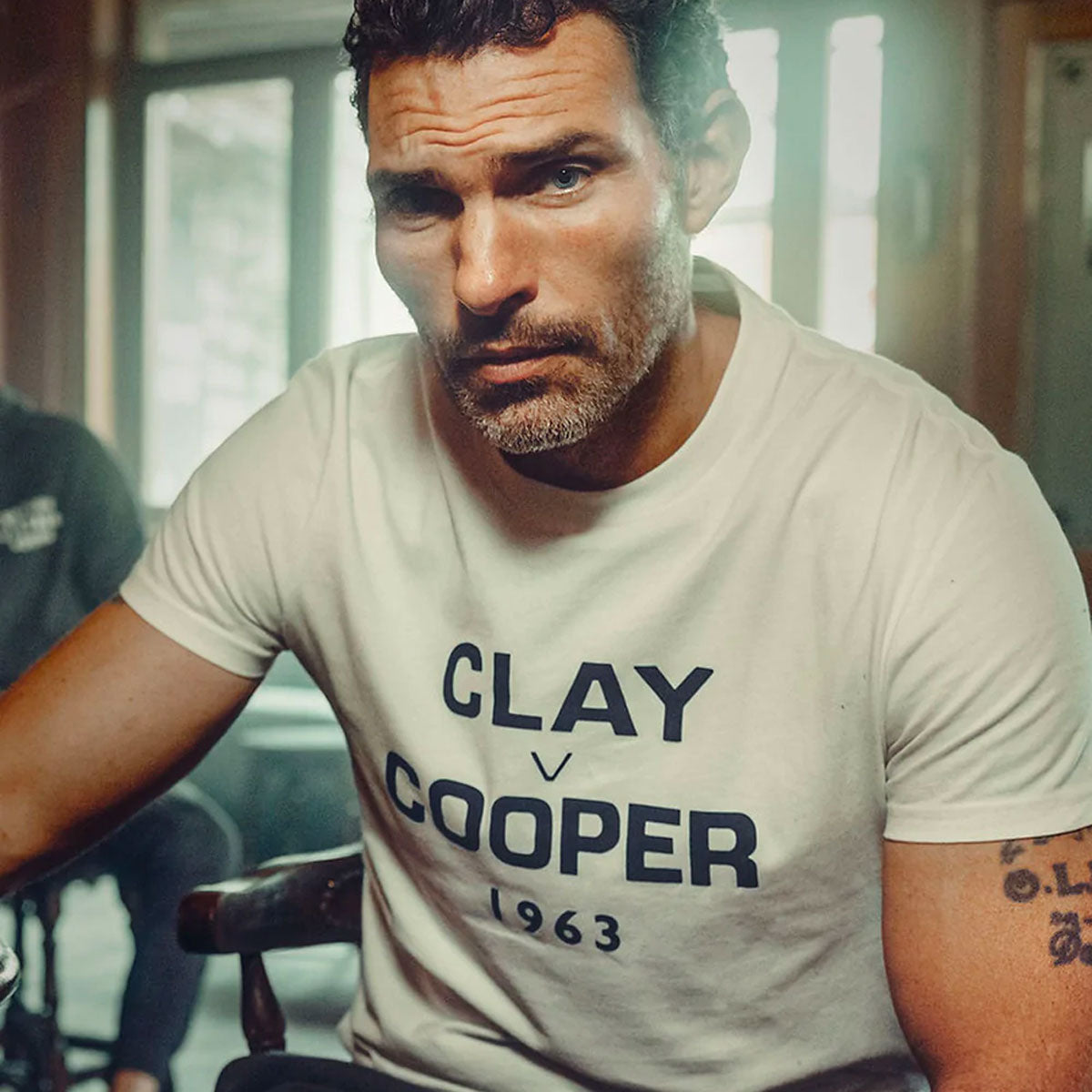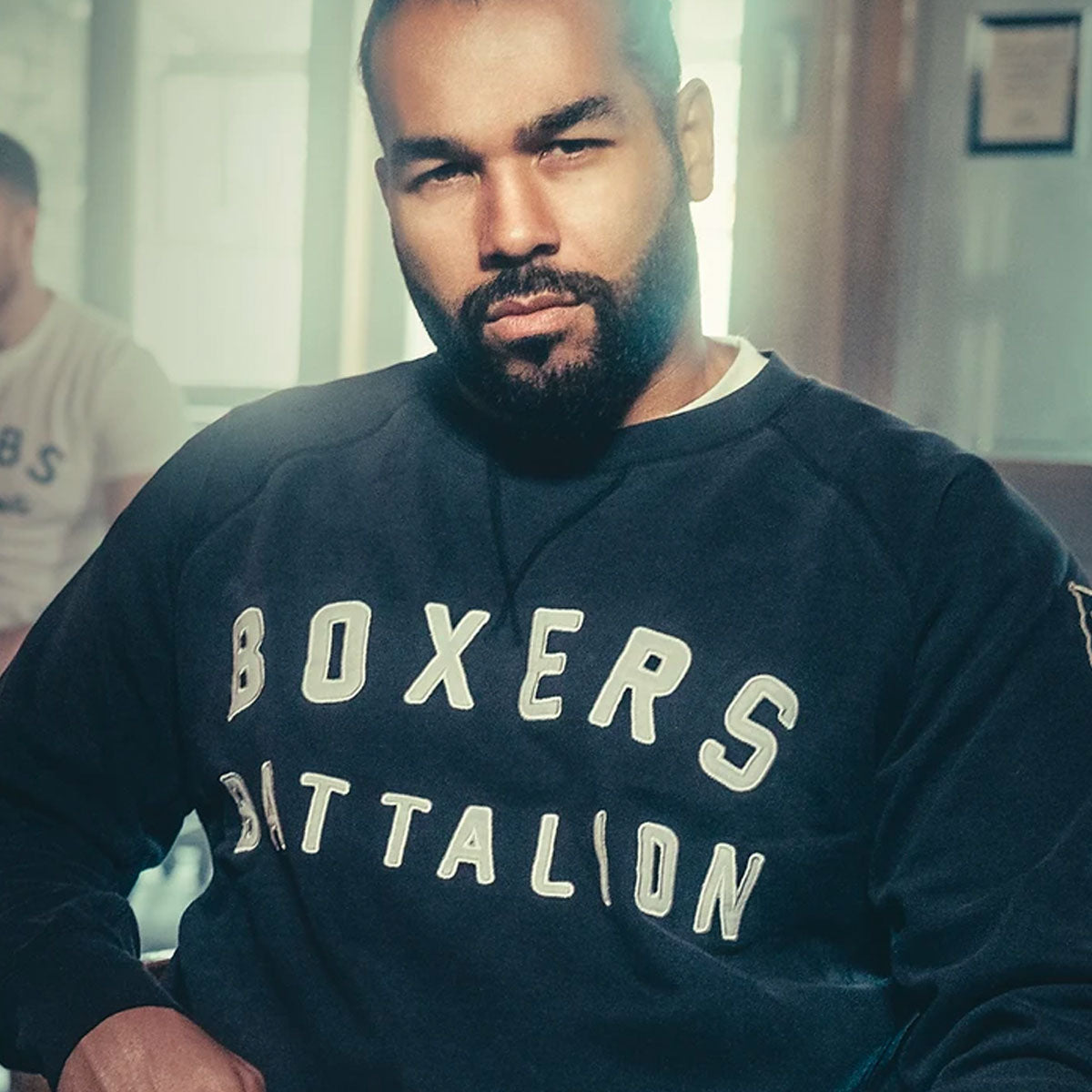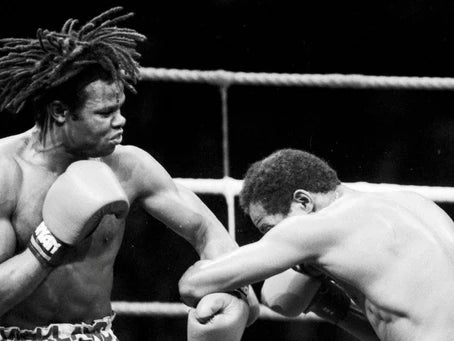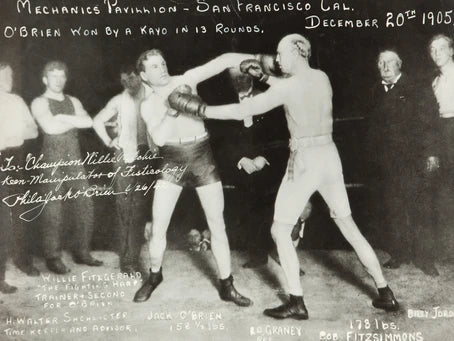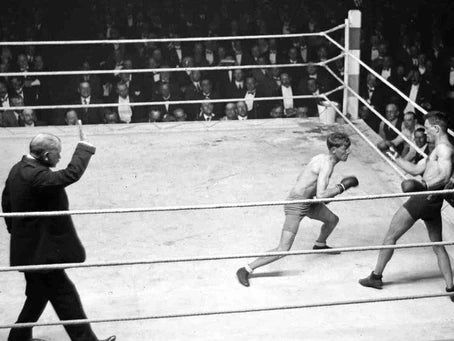Contributed by Paul Zanon
“Laing’s flashy hands down style can get him into trouble. It can also get him out of trouble, but it’s been good enough to see him through 20 years of boxing.”
Harry Carpenter
Often banded as the best British champion to never win a world title, with his unorthodox style and training regime, Kirkland Laing was a loveable, eccentric enigma. Cut and paste his life style to any other athlete and failure would have no doubt ensued.
Born 20 June 1954 in Jamaica, Laing claimed he wasn’t able to walk until the age of five, due to his mother being involved in a serious accident when she was nine months pregnant. That didn’t deter the pugilistic supremo. Leaving Jamaica as a child, he migrated to Nottingham where he developed a penchant for boxing, competing in his first amateur bout at the age of 12. Less than six years later on 5 May 1972, Laing, aged 17 and representing Clifton ABC beat Vernon Sollas from Madison ABC to win the ABA featherweight championship. Somehow, selection for the Olympic games of 1972 passed him by, which was a tragedy for both Laing and Team GB.
On a side note, his brother Tony, younger by three years and lesser known to current boxing fans, also trained in Nottingham and as a professional would go on to boast a record of 13-4-1. Despite a relatively shorter and less colourful career compared to brother Kirkland, in a four fight run, Tony beat Clinton McKenzie back to back to become the British super lightweight champion, failed an attempt to gain the European crown against Tusikoleta Nkalankete, then shortly after beat Dave Chibuye to be crowned Commonwealth champion. There was certainly something in the Laing genes.
Back to Kirkland. He turned professional at 19 years of age under the watchful eyes of Terry Lawless and Mickey Duff, basing himself out of Hackney, London. On 14 April 1975, Laing knocked out Joe Hannaford in one minute and nine seconds of the second round at the Albany Hotel, Nottingham. Despite being impressed with his ability, Laing’s hands-down style infuriated Terry Lawless, to the point that Lawless used to tie his right hand up during training to get him acquainted to keeping a guard. The technique obviously never rubbed off on affable Laing. 
Unbeaten Laing, now Boasting 14 wins and one draw, at the age of 24 Laing beat fellow Jamaican born, English resident, Henry Rhiney, with a tenth round stoppage at the Arden Sporting Club, Birmingham. The victory was great, but the spoils were even better. He was now the welterweight champion of Britain.
Unfortunately, after racking up three further victories, Laing lost his title to Welshman Colin Jones on 1 April 1980. After dominating the entire fight, in round nine, as Laing was teeing off on Jones, the Gorseinon resident caught Laing with an almighty right hand and followed it up with a barrage, which brought the contest to a halt.
After notching up three further wins, Laing wanted to put the record straight with Jones on 28 April 1981, almost a year to the day that the Welshman stole victory from him. Unfortunately, lighting struck twice. Laing was cruising the fight on the scorecards, when Jones unleashed a left hook in the ninth round which required no follow up. However, three fights later, fortune favoured the brave.
On 4 September 1982 at Cobo Hall, Detroit, Laing took on Roberto Duran. The Panamanian had just come off a points loss to Wilfred Benitez seven months prior and Laing, was in all intents and purposes a great stepping stone to recovery, before challenging for world honours again in the not too distant future. Laing had other plans. 
Laing vs Duran 1982
Aware of Duran’s moniker, ‘Hands of Stone,’ Laing trained probably the hardest he’d ever trained for any contest and delivered a pitch perfect performance in the art of hitting and not getting hit, gliding around the ring with accuracy and finesse. One of the judges made the contest a draw, whereas the other two had Laing ahead by two rounds. To clinch victory on the other side of the pond against such a feared and respected fighter, was without doubt Laing’s greatest career moment and one of the most memorable British victories overseas. The result sent shockwaves through the global boxing community and The Ring Magazine recognised this seismic shift, awarding the contest Upset of The Year, 1982.
After the fight, both fighters went off in polar opposite trajectories. Laing disappeared for a year and blew his bank balance. Why? Perhaps because he’d beaten one of the best fighters ever and should have been granted a world title shot. Either way, over the next 12 months Duran took on Britain’s very own Jimmy Batten, welterweight legend Pipino Cuevas and then captured the WBA world super welterweight title, knocking out Davey Moore in eight rounds. To top off the year, he moved up to middleweight and lost a very close points decision against ‘Marvellous’ Marvin Hagler. His estimated earnings during that year are rumoured to have excelled $6 million. To say Duran’s stock had risen was an understatement. It was a sporting resurrection. This must have been hard for Laing to witness. When he did make his return on 10 September 1983 back in the USA, he ended up getting stopped in the tenth round by Californian, Fred Hutchings, at Harrah’s Marina Hotel Casino, Atlantic City. 
After disappearing for a further 14 months, Laing returned with an added level of determination. On 27 November 1984, he stopped 1979 ABA light middleweight champion, Darwin Brewster, in seven rounds at Wembley Arena.
Between 1985-86, Laing fought a further six times, in the UK, USA and Australia, losing only one contest via stoppage, to Ozzie Brian Janssen, in his backyard of Brisbane. However, on 14 March 1987, Laing’s shot at the fistic limelight was once again switched on as he took on former British and Commonwealth welterweight champion, Sylvester Mittee at Elephant and Castle Centre, Southwark. They were battling for the vacant British welterweight title, an honour previously held by Laing six years prior, which had now been vacated by rising star, Lloyd Honeyghan.
In a five round contest which saw Laing gliding around the ring with a Houdini-esq performance, The Gifted One sealed the bout with a barrage of unanswered shots and was once again British champion.
After a one round destruction of Marvin McDowell, Laing defended his British crown against respected Liverpudlian Rocky Kelly, on 26 November 1987 at the Ramada Inn, Fulham. In an interview with Steve Bunce many years later, boxing trainer Brian Lawrence recalled, ‘All throughout the night he (Laing) was gambling and it was only that a friend happened to pass his house on the Saturday and knocked, and he was in there sleeping. They threw him in the car, drove up as fast they could, threw water on his faced, gloved him up. I remember Mickey Duff was going mad. But, he goes in the ring and beat Rocky Kelly.” 
Laing vs Floyd 1988
Stopping Kelly in the fifth session, in typical Laing persona, he only fought once in 1988 against American journeyman Sammy Floyd, weighing generously over his welterweight norm and only managing to edge out a 79-78 win over eight rounds at Wembley Arena, on the undercard of Lloyd Honeyghan versus Jorge Vaca. Taking a well-deserved break, Laing didn’t return for a further 13 months, but when he did, he was thrown in against ring veteran, Mauritanian born Italian, Nino La Rocca, for the vacant European title in his backyard of Vasto, Italy.
Despite being in better shape, and overcoming ring rust following an inactive period, Laing gave a good account of himself, but fell short on foreign soil. However, his next five fights sealed his place in the British boxing folklore. In the next 11 months, Laing fought three times, defending his British strap twice and by doing so earned his coveted Lonsdale belt outright. 
The icing on the cake came only six weeks after defending his British crown against Trevor Smith. On 9 May 1990, Laing took on the defending European welterweight champion, Frenchman Antoine Fernandez, at the Grand Hall, Wembley. Fernandez boasted a record of 37-1-1 and had beaten La Rocca via points decision to gain the belt. All eyes were on 36 year old Laing now, as he wanted to prove a point that last time he challenged for the European title he was nowhere near his best.
In the opening half of the first session, Laing got caught a few times and it seemed that perhaps father time was starting to eat into his reflexes and footwork. Then, the Nottingham based boxer started to unload some lovely fluid combinations, with little response from the champion. Laing was often honest about the fact that he lost interest the longer a fight went on, but on this occasion he had no cause for concern.
Halfway through the second round, Laing threw a right hand lead which put the Frenchman on the seat of his pants. Courageously rising on wobbly legs, Fernandez lasted about a minute longer before being knocked out by a lighting fast flurry. Laing was now the European welterweight champion.
Five months after the Fernandez fight, Laing knocked out Rocky Berg in two rounds, however, only a month later he embarked on a three fight losing streak, which was detrimental on a number of levels. On 14 November 1990 Laing lost his European crown on points to former WBA world super lightweight champion, Patrizio Oliva. Two months later he was narrowly outpointed by Del Bryan and consequently lost his British crown, then three months later he was unsuccessful in an attempt to beat Jamaican born Canadian, Donovan Boucher for the Commonwealth title, with the Toronto resident stopping Laing in nine rounds.
The championship belts are the commodity which give you financial traction. Failing that, you need to fight a massive name, such as a Roberto Duran. However, at 36 years old, he no longer held the appeal he did as the young gun in Detroit. Outside of the euphoria which a boxing ring provided, Laing unfortunately sought solace in gambling, drink and drugs and it was a slippery undertone which had been in his life for a while, but became something to lean on more when times started to become increasingly tougher.
Returning to the ring two years later on 17 February 1993, Laing blasted Tanzanian born Bozon Haule in three rounds. Over the next 22 months, Laing won four more fights, but also incurred two very respectable losses against future world champions, Kevin Lueshing and Glenn Catley, the latter contest acting as Laing’s swansong on 22 November 1994.
Without boxing in his life and the temptations of alcohol and drugs, Laing consequently ended up homeless within a few years and was known to be frequenting crack dens. In 2003, in a documentary for Setanta Sports, top boxing author, pundit and journalist, Steve Bunce tracked Laing down in Hackney. The programme made for hard viewing at times, seeing one of boxing’s most talented fighters sipping a can of beer, whilst hoping the year after would be the one he turned his life around and re-engaged with boxing.
A short while after the documentary, Laing almost perished after falling from the balcony of his fourth floor flat. The cause was not clear, but he claimed he’d been partying. After coming back from his brush with death, he moved back up to Nottingham to be close to his family.
What he lacked in discipline, he excelled with talent. Despite his rollercoaster life and career, he was a two time British champion, an outright winner of the Lonsdale belt and the king of Europe who will always be recognised on a global scale. Kirkland Laing was indeed, The Gifted One.
Paul Zanon, has had nine books published, with almost all of them reaching the No1 Bestselling spot in their respective categories on Amazon. He has co-hosted boxing shows on Talk Sport, been a pundit on London Live, Boxnation and has contributed to a number of boxing publications, including, Boxing Monthly, The Ring, Daily Sport, Boxing News, Boxing Social, amongst other publications.


